(Page créée avec « This module offers to combine different low-tech. The solar oven catches the sun's rays and concentrate them behind a window to increased the temperature of the cookin... ») |
(Page créée avec « Ps : A « Glacial » use is also possible if you not let the sun penetrate ») |
||
| Ligne 20 : | Ligne 20 : | ||
|Introduction=This module offers to combine different low-tech. The solar oven catches the sun's rays and concentrate them behind a window to increased the temperature of the cooking chamber. If the thickness of the oven has a well thermal isulation, the baking may continue once the panels have been tucked. If the door system steal open, the hot environment is perfect to drying fruits if they are protected of the direct sunlight. | |Introduction=This module offers to combine different low-tech. The solar oven catches the sun's rays and concentrate them behind a window to increased the temperature of the cooking chamber. If the thickness of the oven has a well thermal isulation, the baking may continue once the panels have been tucked. If the door system steal open, the hot environment is perfect to drying fruits if they are protected of the direct sunlight. | ||
| − | + | Ps : A « Glacial » use is also possible if you not let the sun penetrate | |
}} | }} | ||
{{ {{tntn|Materials}} | {{ {{tntn|Materials}} | ||
Version du 29 mai 2018 à 14:06
Description
Four solaire + Marmite norvégienne + séchoir
Sommaire
Sommaire
- 1 Description
- 2 Sommaire
- 3 Introduction
- 4 Étape 1 - Créer la structure en polystyrène
- 5 Étape 2 - Recouvrir d'aluminium ou le couverture de survie
- 6 Étape 3 - Fabriquer la structure en bois
- 7 Étape 4 - Fixer les panneau réflecteur
- 8 Étape 5 - Construire la porte du four
- 9 Étape 6 - La cuisson
- 10 Étape 7 - Fabriquer le séchoir
- 11 Commentaires
Introduction
This module offers to combine different low-tech. The solar oven catches the sun's rays and concentrate them behind a window to increased the temperature of the cooking chamber. If the thickness of the oven has a well thermal isulation, the baking may continue once the panels have been tucked. If the door system steal open, the hot environment is perfect to drying fruits if they are protected of the direct sunlight.
Ps : A « Glacial » use is also possible if you not let the sun penetrate
Étape 4 - Fixer les panneau réflecteur
L'utilisation de la chambre à air pour les charnières permet d'assurer une bonne tenue et une tension adéquate. Les cordes serviront à maintenir les panneaux à 90° par rapport aux rayons solaires. Elles fixent également les panneaux au chassis une fois repliés.
Étape 5 - Construire la porte du four
La porte est également isolée pour minimiser au maximum les ponts thermiques.
Étape 6 - La cuisson
Une fois fermé hermétiquement, la température intérieure du four peut dépasser les 90°C. Le plateau de cuisson noir y participe en absorbant les rayons du soleil. Ce four est conçu pour recevoir et chauffer huit bouteilles d'eau standard d'1,5L.
Published
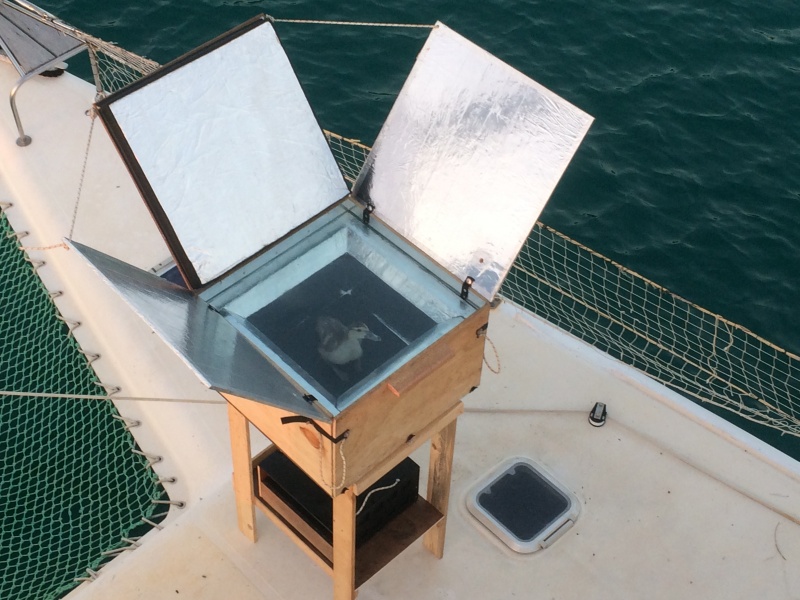
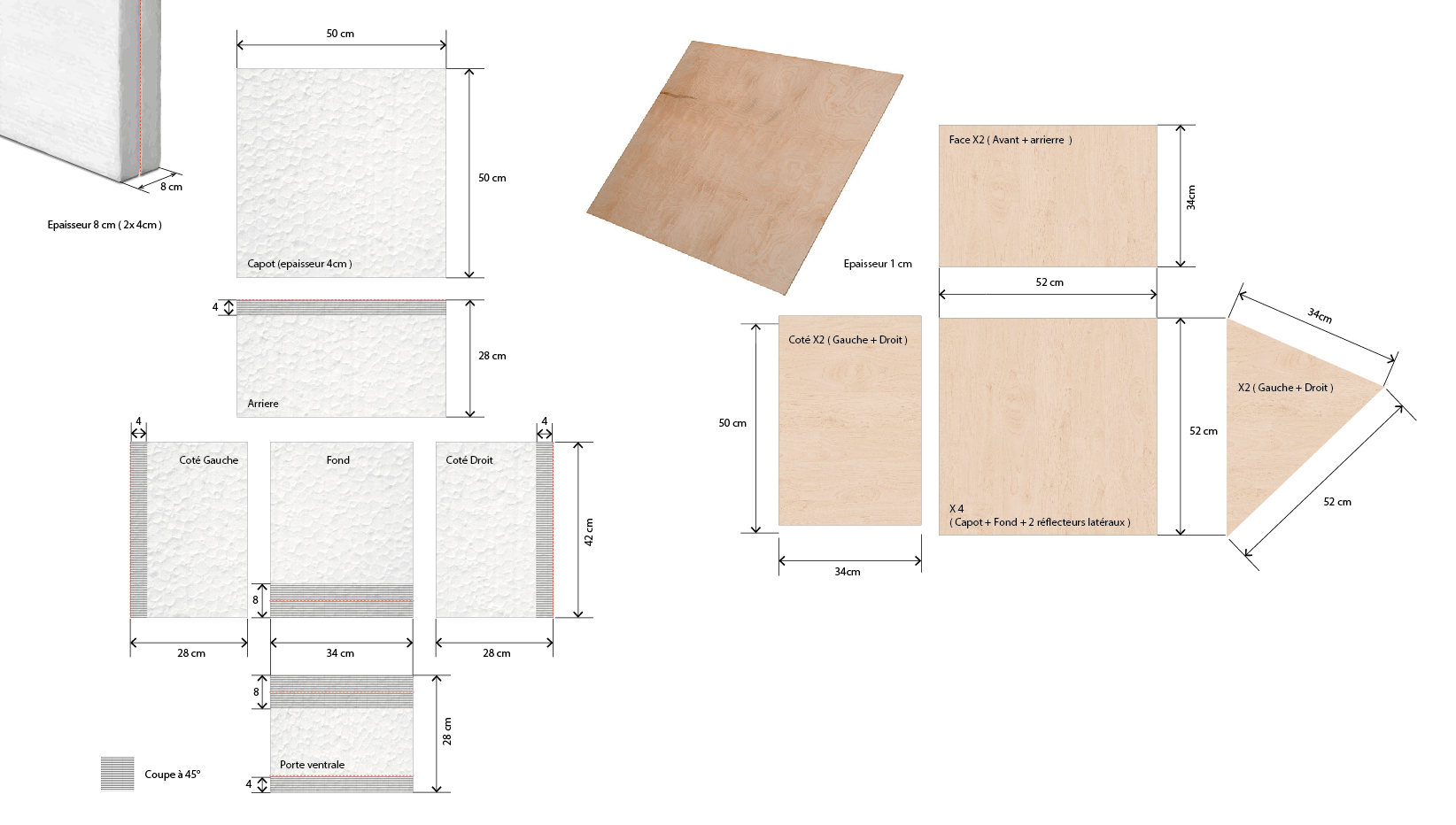
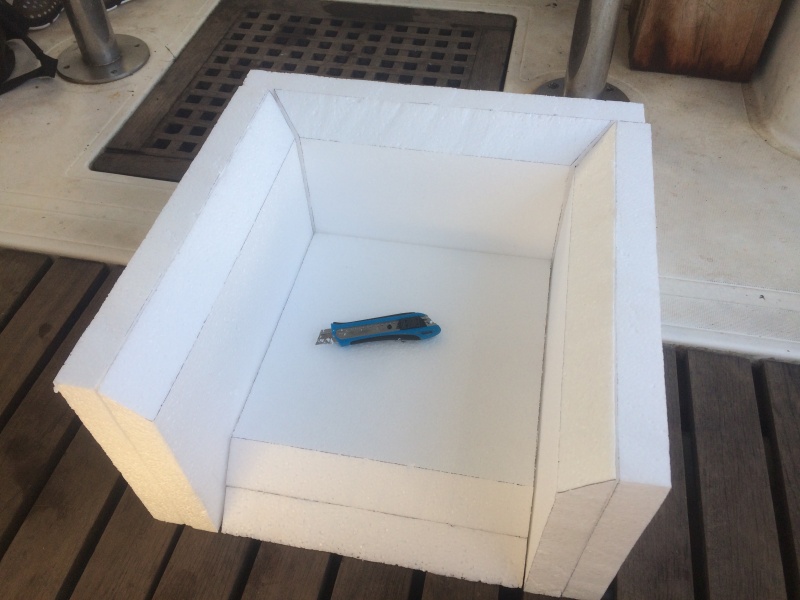
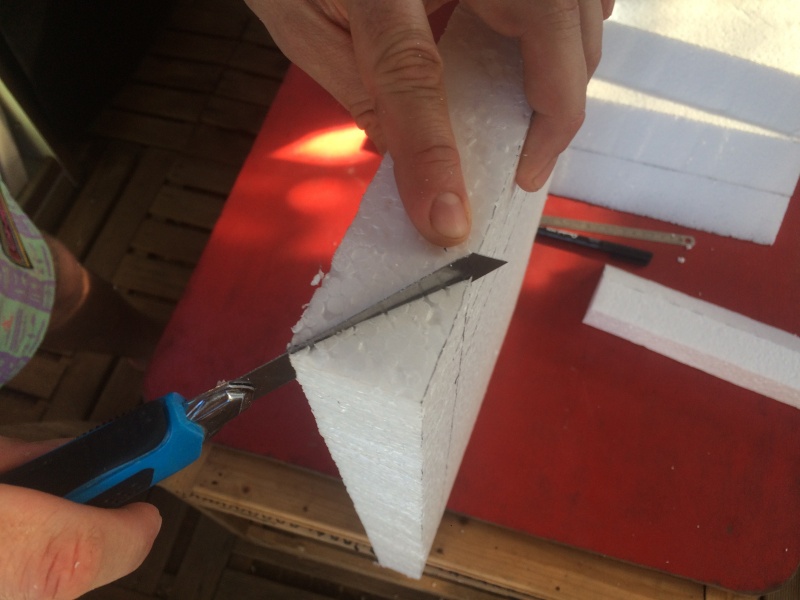
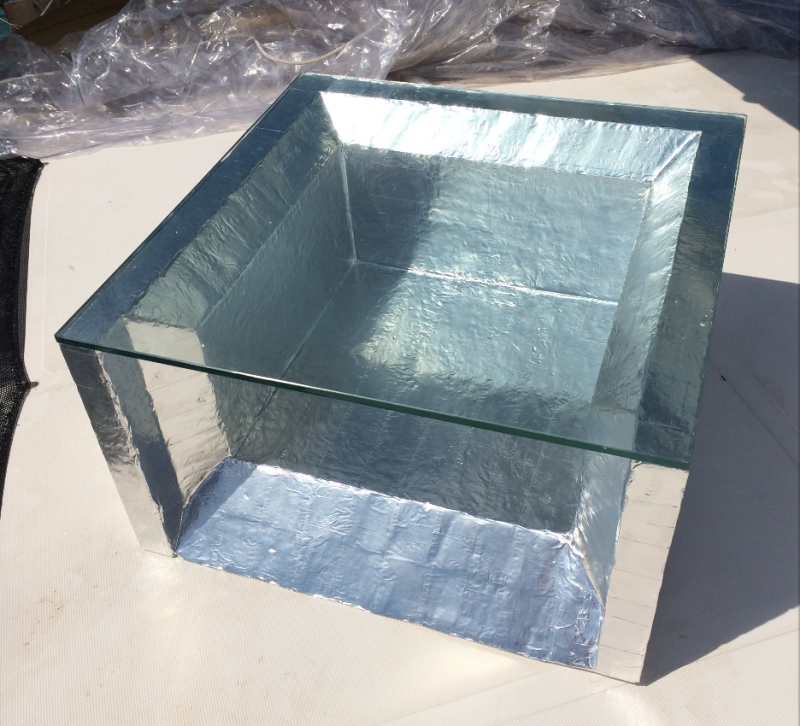
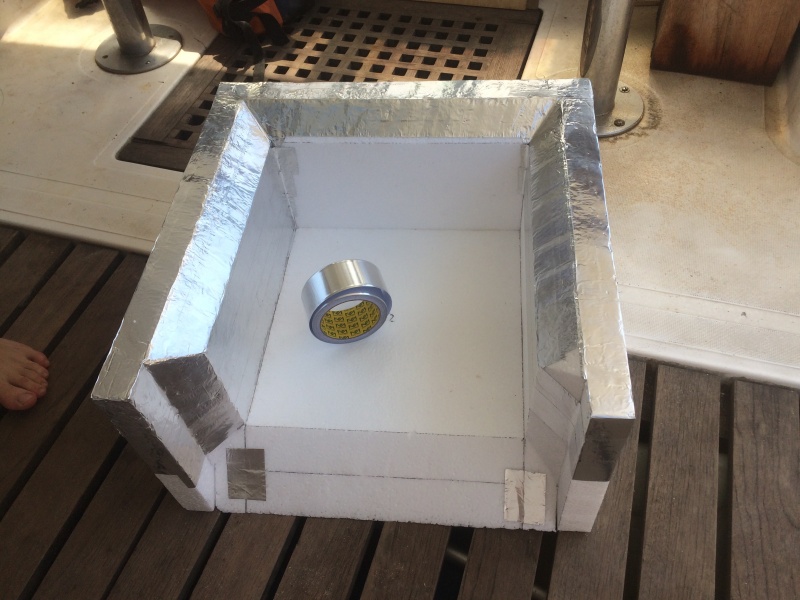
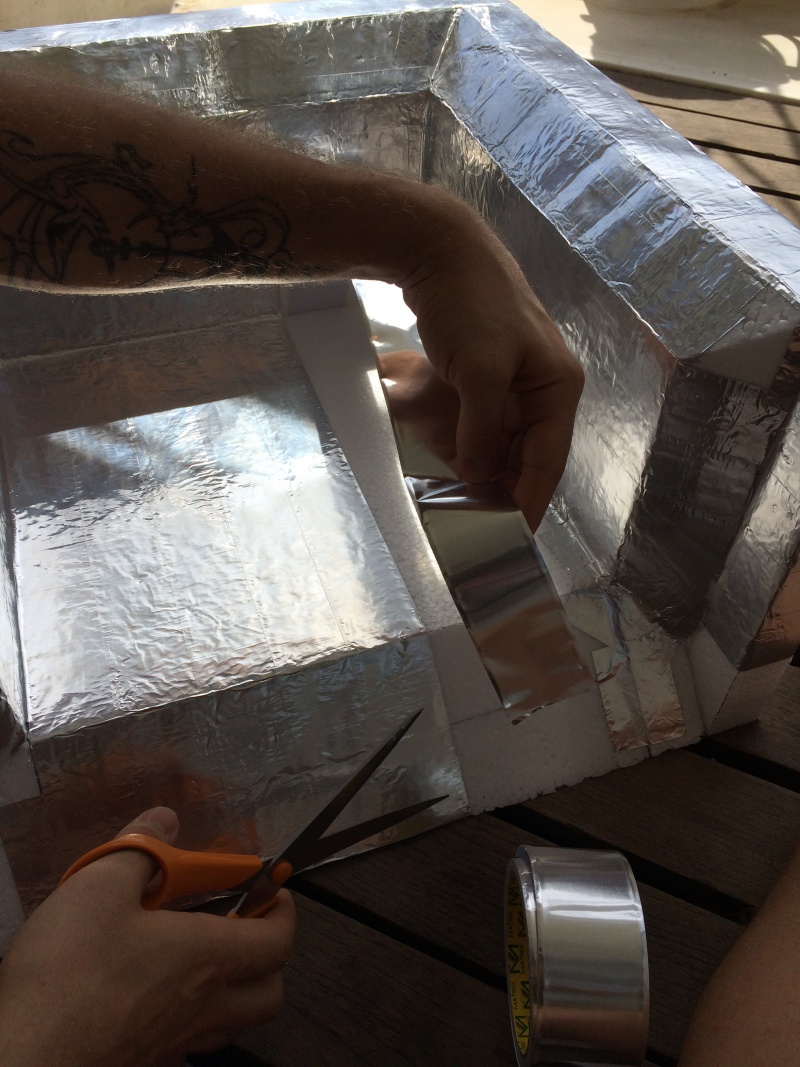
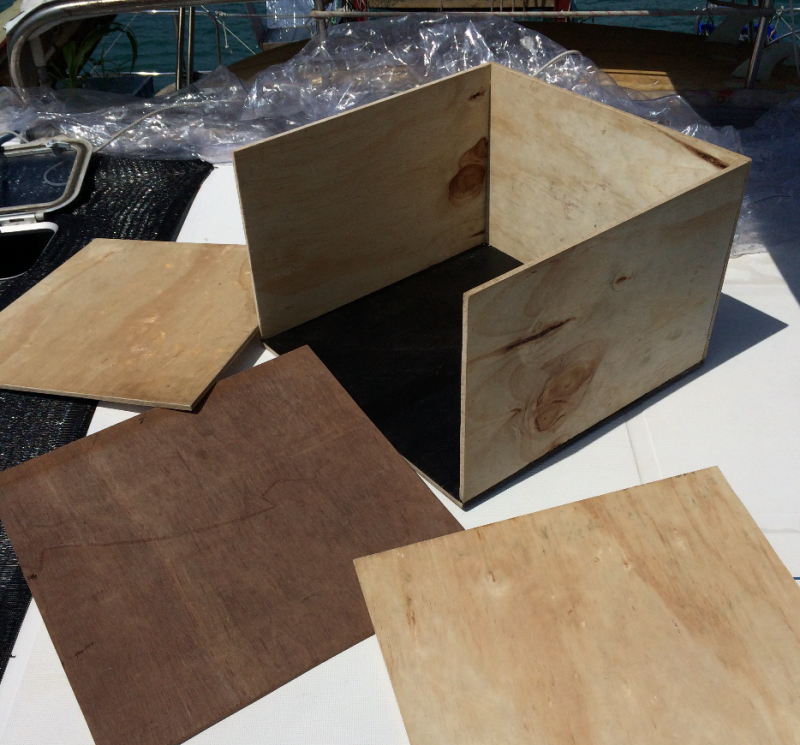
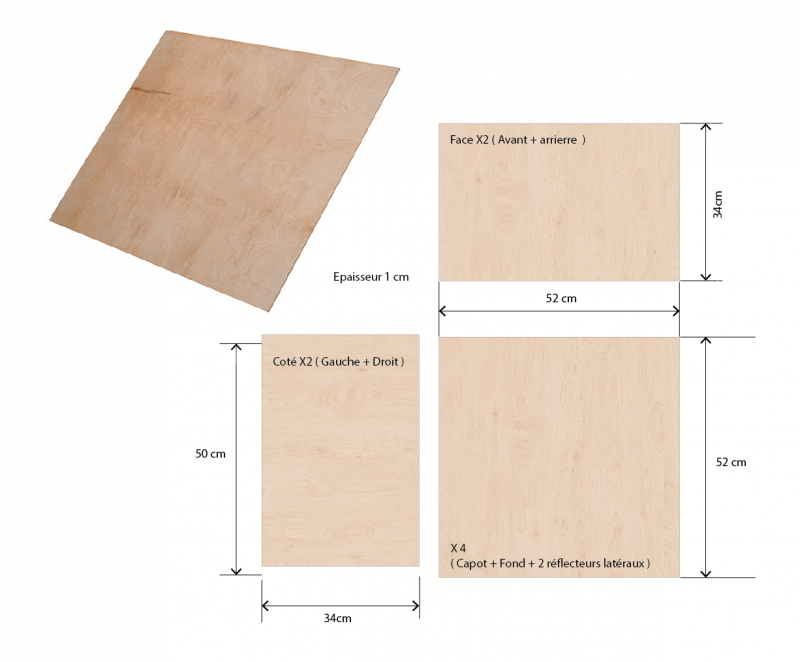
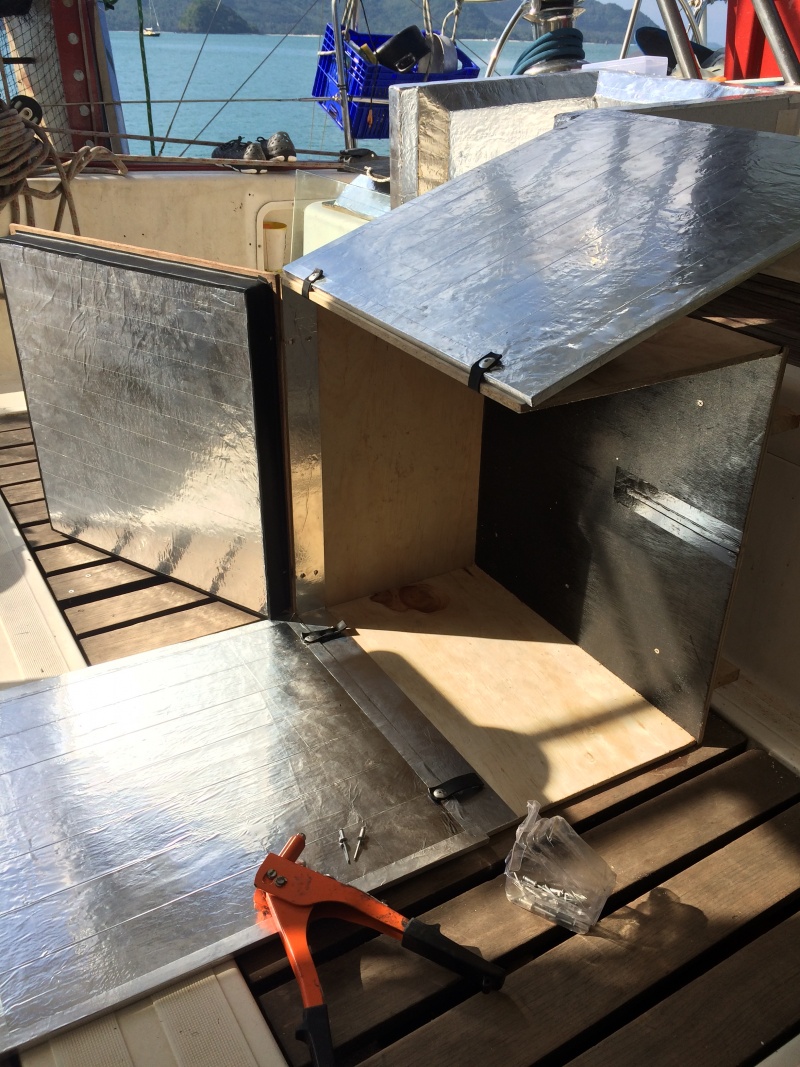
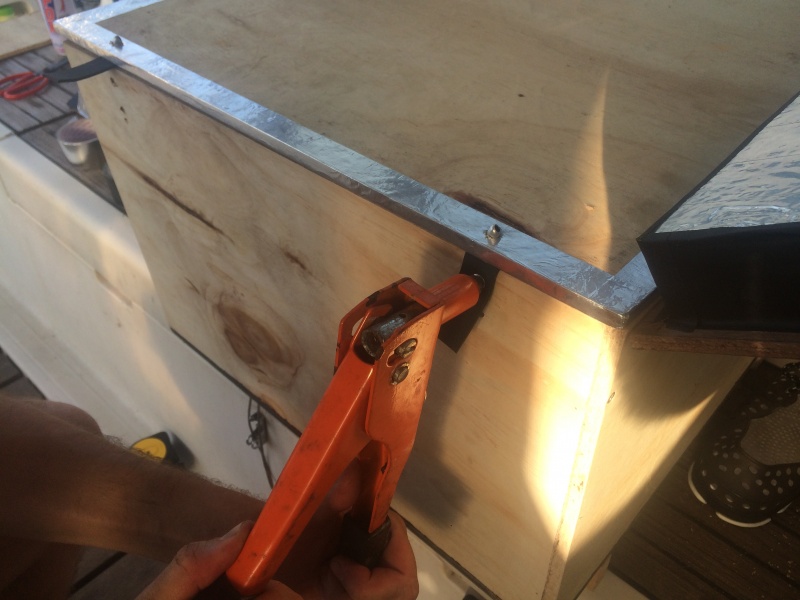
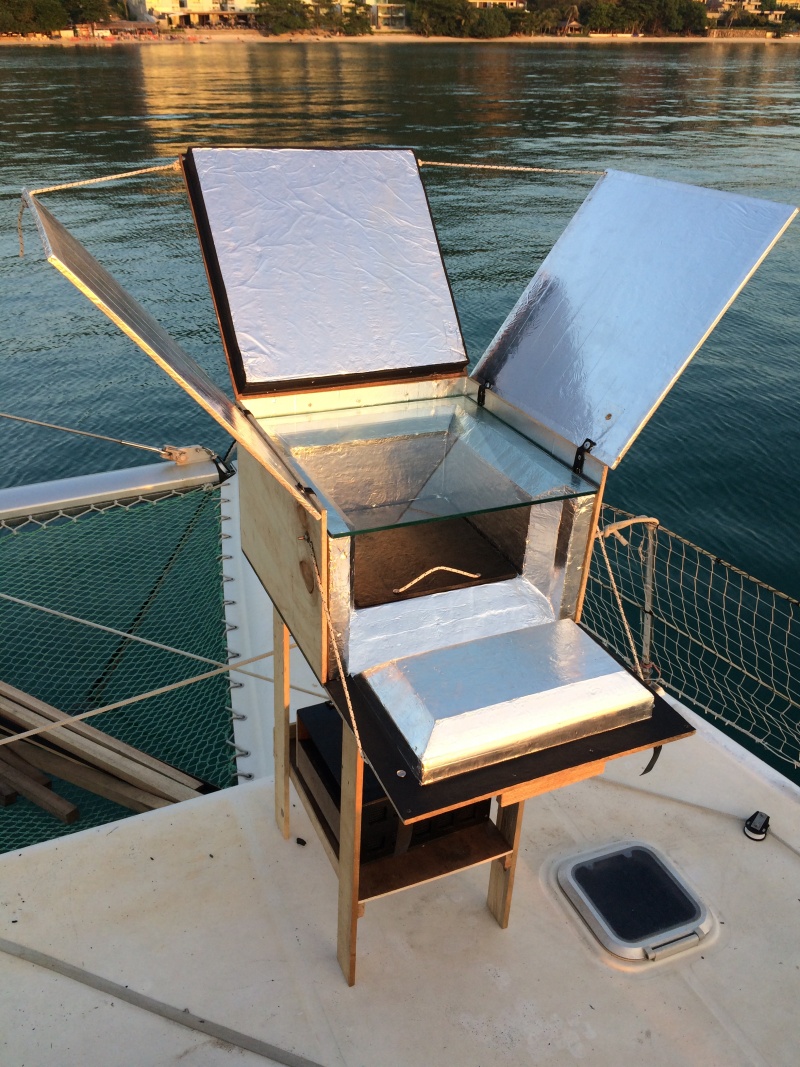
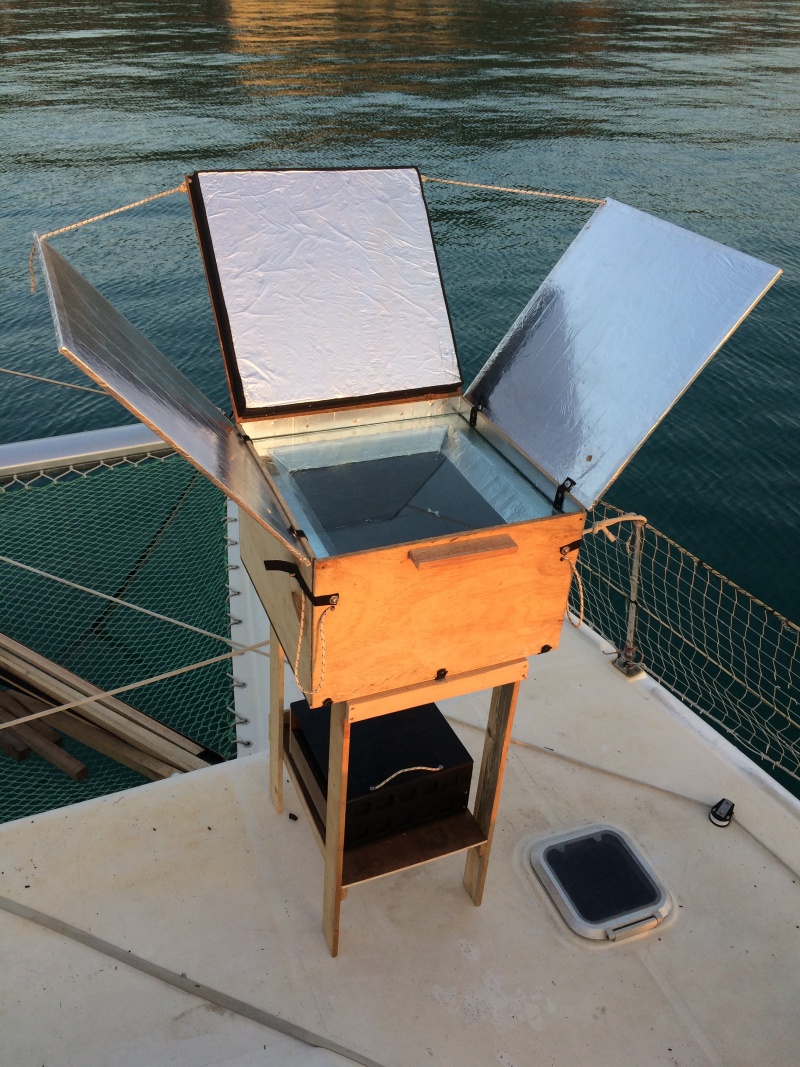
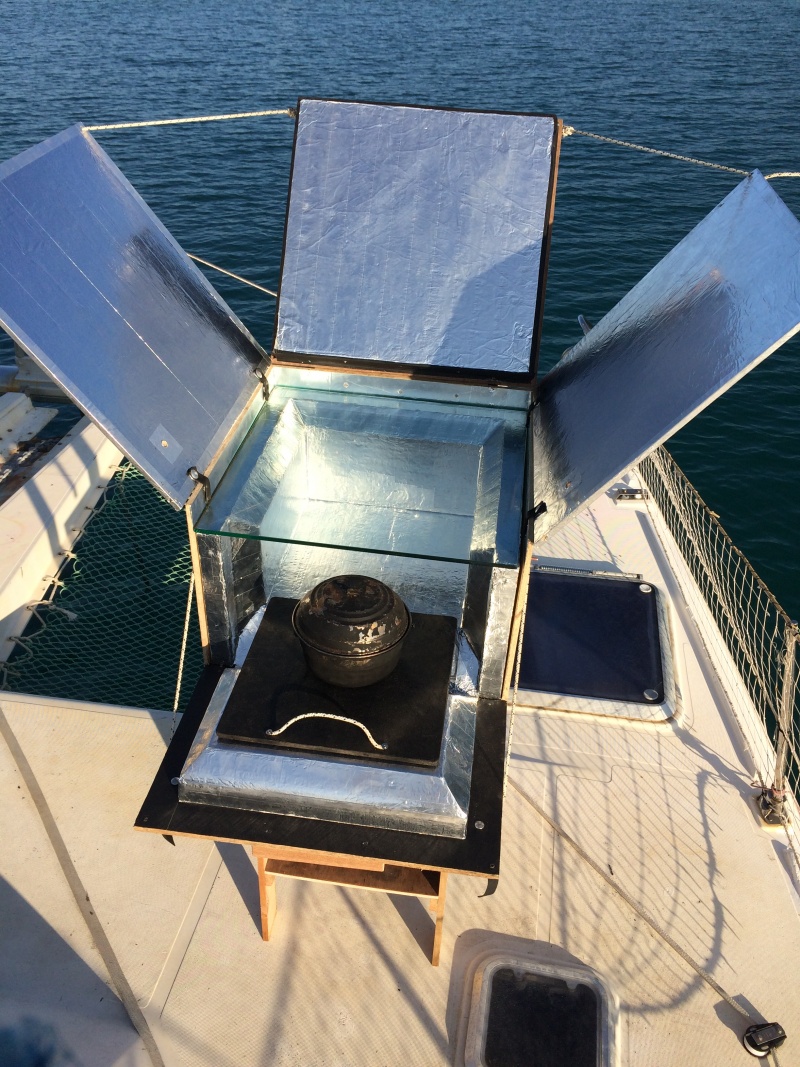
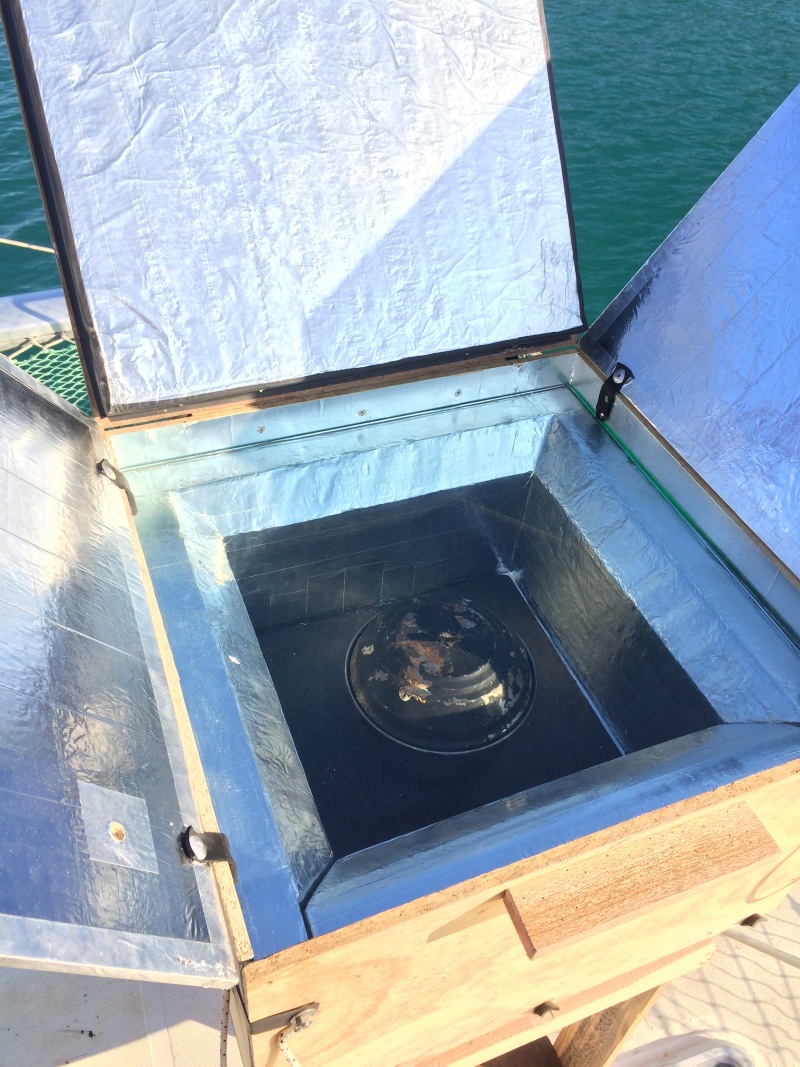
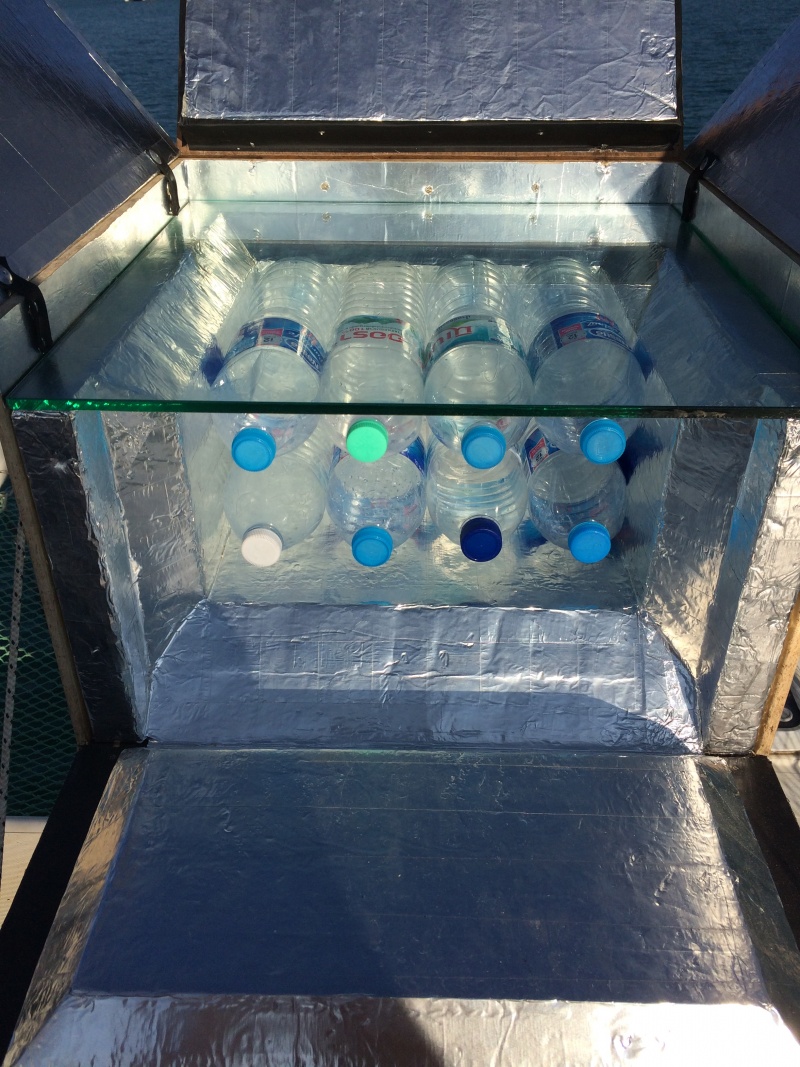
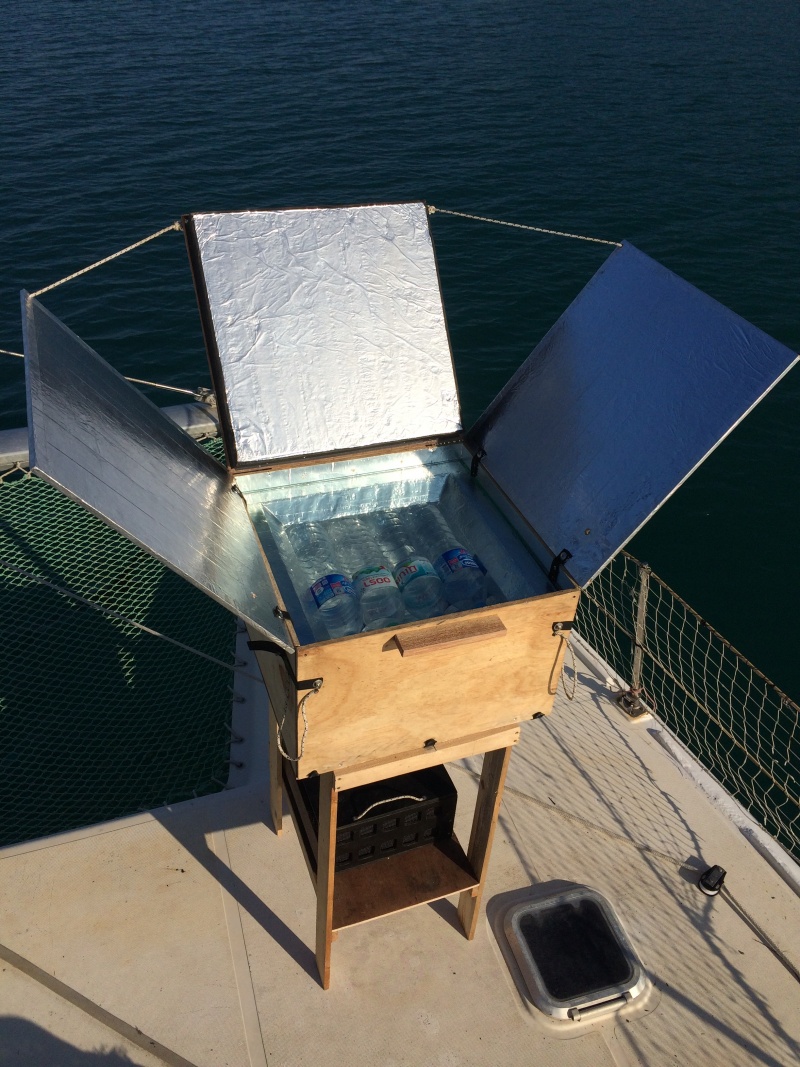
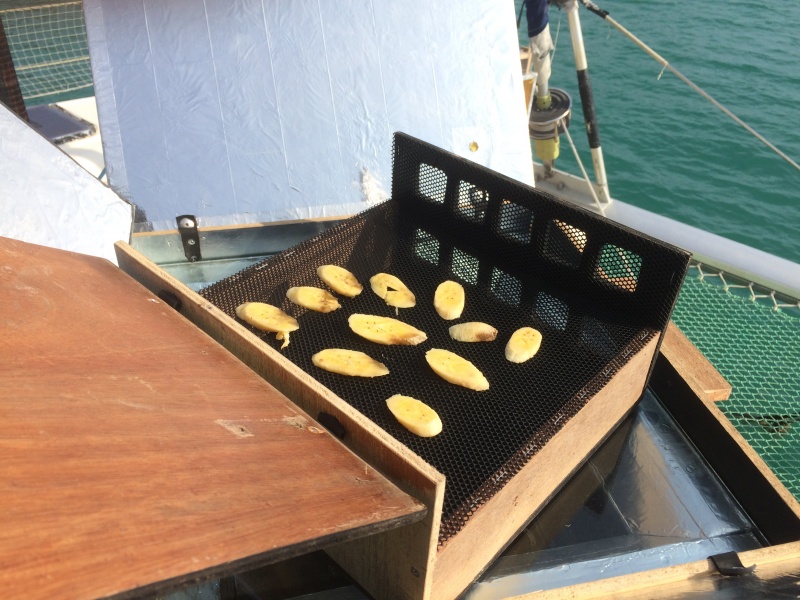
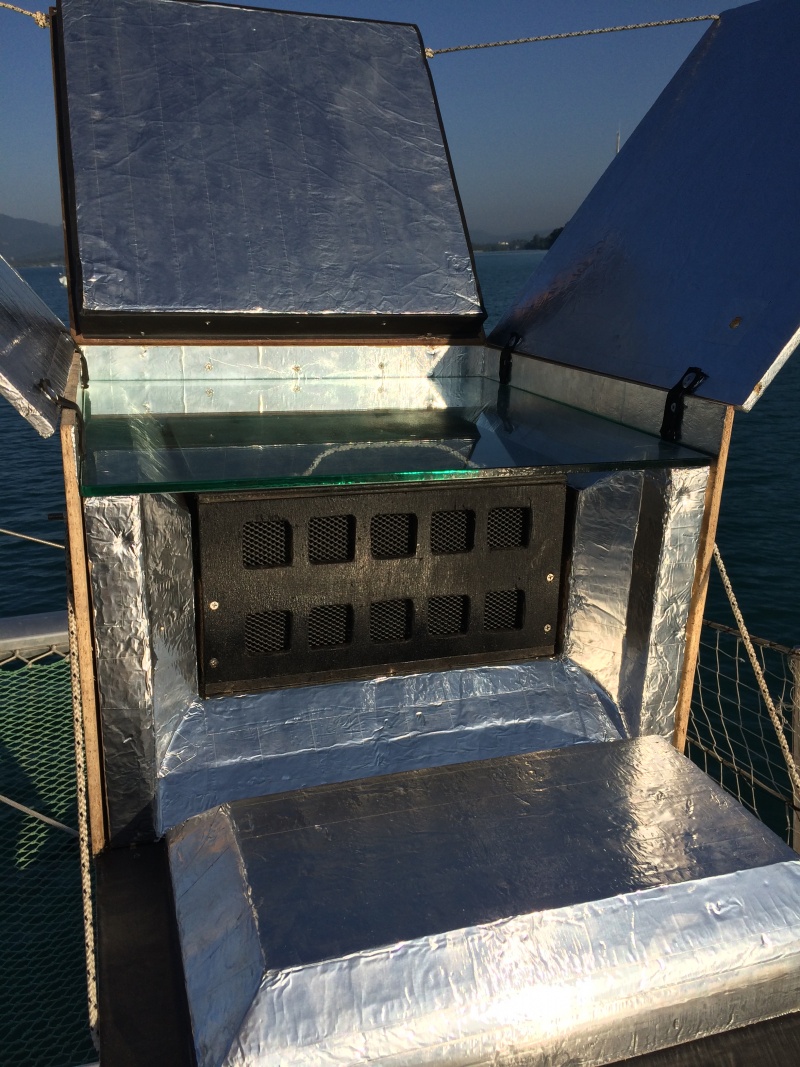
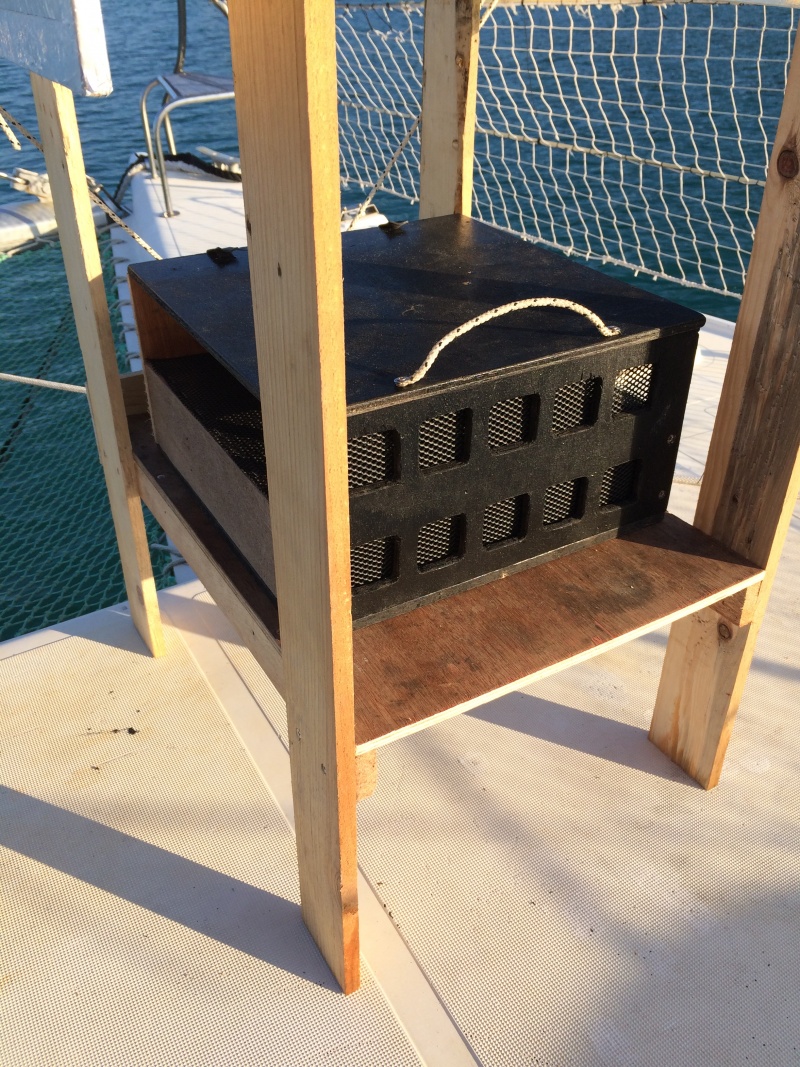
 Français
Français English
English Deutsch
Deutsch Español
Español Italiano
Italiano Português
Português